Sizzling Asian Beef with Snow Peas Recipe: A Flavorful Delight
Weeknight dinners demand quick, flavorful solutions that pack a punch of asian beef with snow peas excitement.
Tender strips of beef sizzle alongside crisp, vibrant snow peas in this fast-to-make dish.
The marriage of savory and fresh ingredients creates a symphony of textures and tastes.
Succulent meat meets crunchy vegetables in a harmonious blend of traditional Asian flavors.
Soy sauce and garlic weave their magic, infusing every bite with depth and richness.
Home cooks can whip up this restaurant-quality meal in under 30 minutes.
What Makes Asian Beef with Snow Peas So Good
Ingredients for Asian Beef and Snow Peas
Protein:Marinade Ingredients:Vegetable Components:Cooking Essentials:Rice Base:How to Cook Asian Beef with Snow Peas
Step 1: Whip Up a Zesty Marinade
In a mixing bowl, combine soy sauce, oyster sauce, hoisin sauce, brown sugar, minced garlic, grated ginger, and cornstarch.
Slice flank steak into thin strips and toss thoroughly in the marinade, ensuring each piece gets well-coated.
Step 2: Let Flavors Mingle
Allow the beef to soak in the marinade for at least 15 minutes, letting the flavors penetrate deeply into the meat.
Step 3: Sear the Beef to Perfection
Heat vegetable oil in a large skillet or wok over high heat.
Spread marinated beef in a single layer and cook, stirring occasionally, until beautifully browned and cooked through, about 3-4 minutes.
Transfer beef to a separate plate.
Step 4: Crisp Up the Snow Peas
In the same skillet, add another splash of vegetable oil.
Toss in snow peas and stir-fry constantly until they turn a vibrant green and become slightly tender, roughly 2-3 minutes.
Step 5: Bring Everything Together
Return the cooked beef to the skillet with snow peas.
Stir and mix everything together, allowing the ingredients to heat through for 1-2 minutes.
Step 6: Plate and Garnish
Serve the sizzling beef and snow peas over a bed of steamed rice.
Sprinkle with sesame seeds and sliced green onions for an extra pop of flavor and visual appeal.
Tips for Asian Beef Stir-Fry Success
Flavor Variations for Asian Beef and Snow Peas
Serving Ideas for Asian Beef with Snow Peas
Storage Advice for Asian Beef and Snow Peas
FAQs
Marinating helps tenderize the meat, infuse deep flavors, and create a more succulent texture by breaking down muscle fibers and allowing sauces to penetrate the meat.
Yes, you can substitute flank steak with sirloin, skirt steak, or even beef tenderloin, but ensure you slice the meat thinly against the grain for the best tenderness.
The recipe as written is not spicy, but you can add red pepper flakes or sriracha sauce if you want to increase the heat level.
Use a hot skillet or wok, don’t overcrowd the pan, and cook the beef in a single layer to ensure proper browning and prevent steaming.
Print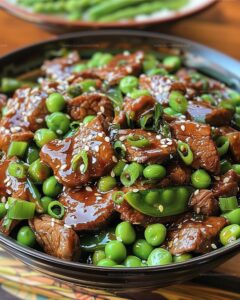
Asian Beef with Snow Peas Recipe
- Total Time: 30 minutes
- Yield: 4 1x
Description
Delightful Asian Beef with Snow Peas brings sizzling wok-seared flavors straight from Chinese kitchens to your dinner table. Crisp vegetables and tender beef create a quick, satisfying meal packed with umami that will leave you craving more.
Ingredients
Protein:
- 1 pound (454 grams) flank steak (thinly sliced)
Sauce and Seasoning Ingredients:
- 2 tablespoons soy sauce
- 1 tablespoon oyster sauce
- 1 tablespoon hoisin sauce
- 1 tablespoon brown sugar
- 2 cloves garlic (minced)
- 1 teaspoon fresh ginger (minced)
- 1 tablespoon cornstarch
Cooking and Garnish Ingredients:
- 2 tablespoons vegetable oil
- 8 ounces (227 grams) snow peas (trimmed)
- Cooked rice (for serving)
- Sesame seeds (for garnish)
- Sliced green onions (for garnish)
Instructions
- Whisk together soy sauce, oyster sauce, hoisin sauce, brown sugar, garlic, ginger, and cornstarch in a mixing bowl.
- Add thinly sliced flank steak to the marinade, ensuring each piece is thoroughly coated. Allow to rest for 15-20 minutes at room temperature.
- Preheat a large wok or skillet to high heat (around 400°F). Add vegetable oil and spread beef in a single layer to prevent overcrowding.
- Sear beef for 3-4 minutes, stirring occasionally, until edges caramelize and meat reaches medium doneness. Transfer cooked beef to a separate plate.
- In the same hot skillet, drizzle remaining oil and quickly stir-fry snow peas for 2-3 minutes until they turn vibrant green and maintain a crisp texture.
- Reintroduce beef to the skillet with snow peas, tossing gently to reheat and blend flavors for an additional 1-2 minutes.
- Transfer the sizzling beef and snow peas over steamed rice, sprinkling sesame seeds and chopped green onions for a final aromatic touch.
Notes
- Marinate longer for deeper flavor infusion, ideally up to 2 hours in the refrigerator for maximum taste absorption.
- Choose high-quality flank steak with minimal fat for tender, lean meat that cooks quickly and evenly.
- Slice beef against the grain to ensure maximum tenderness and prevent chewy texture during cooking.
- Customize the dish by adding extra vegetables like bell peppers or carrots for more nutritional variety and color.
- Use low-sodium soy sauce to control salt content and make the recipe more diet-friendly.
- Keep the wok or skillet extremely hot to achieve that authentic stir-fry sear and prevent meat from steaming instead of browning.
- For gluten-free option, substitute regular soy sauce with tamari and use cornstarch alternative like arrowroot powder.
- Prep Time: 20 minutes
- Cook Time: 10 minutes
- Category: Lunch, Dinner
- Method: Sautéing
- Cuisine: Asian
Nutrition
- Serving Size: 4
- Calories: 360 kcal
- Sugar: 7 g
- Sodium: 780 mg
- Fat: 20 g
- Saturated Fat: 4.5 g
- Unsaturated Fat: 15 g
- Trans Fat: 0 g
- Carbohydrates: 15 g
- Fiber: 3 g
- Protein: 30 g
- Cholesterol: 70 mg

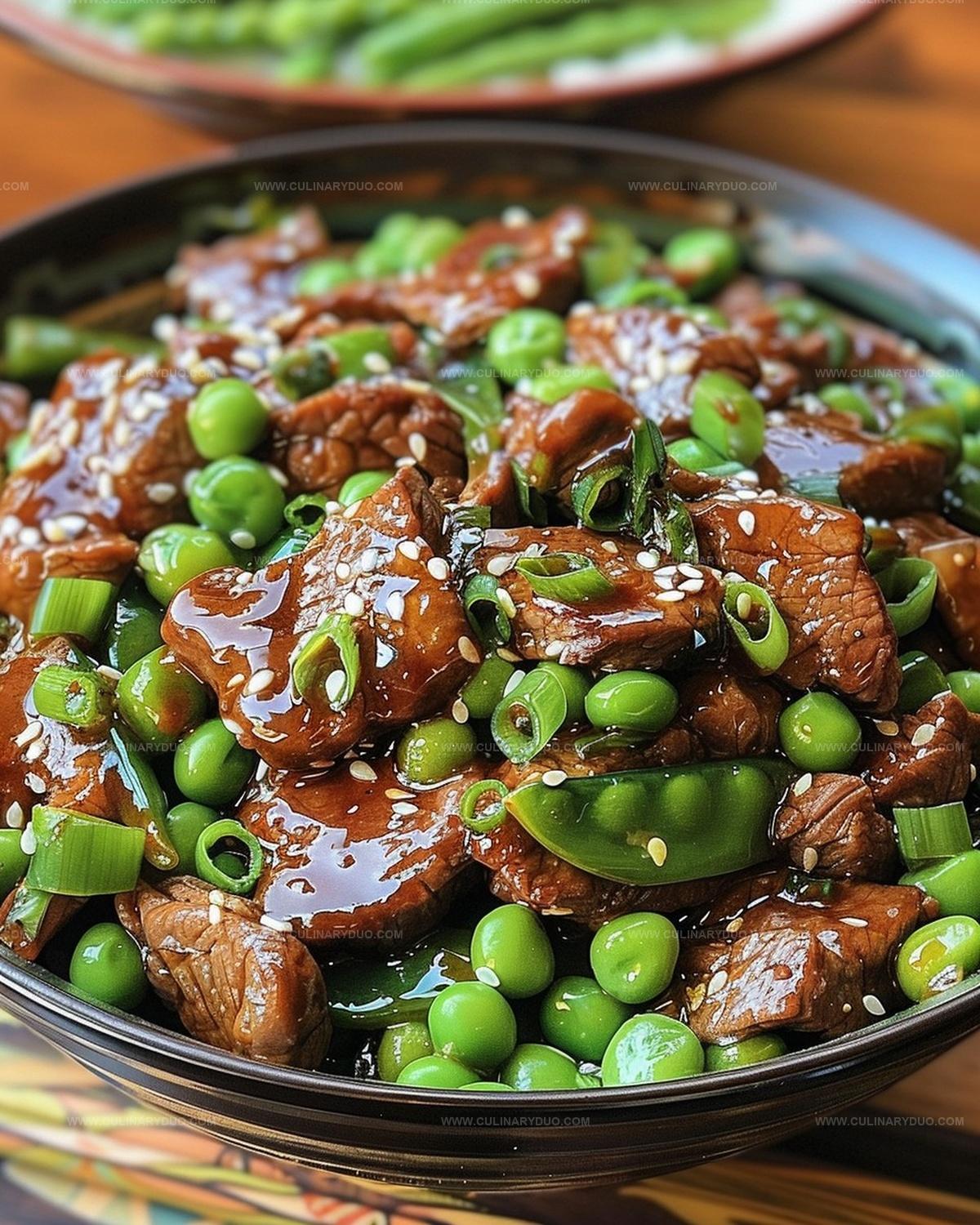
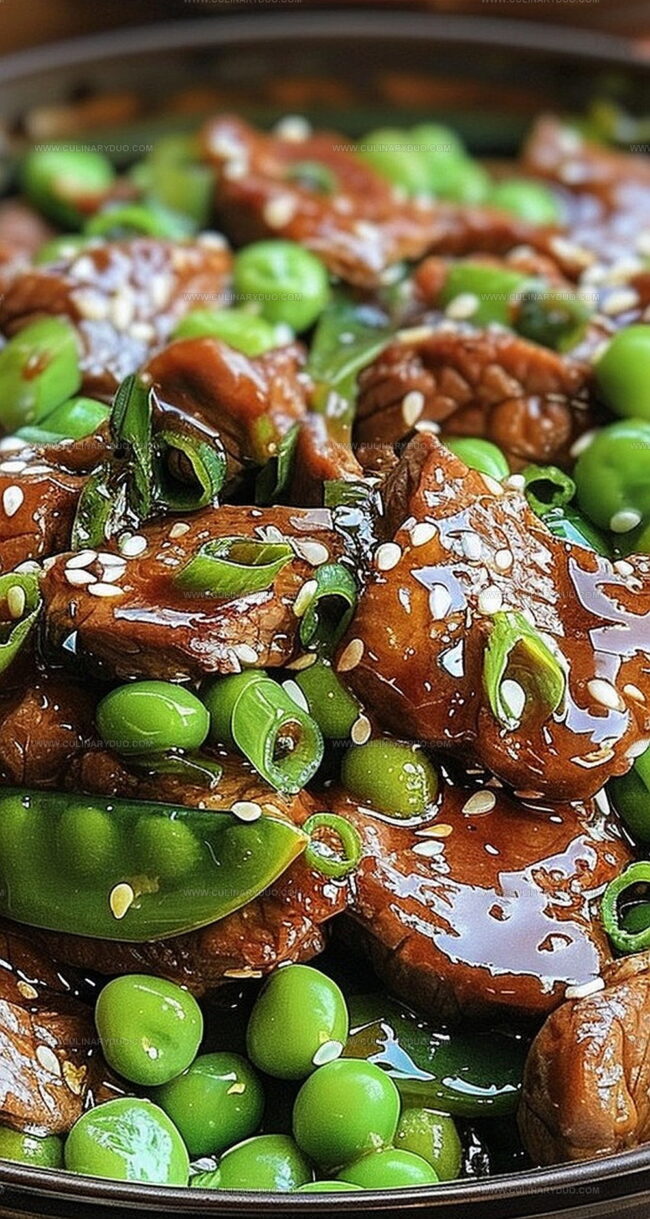
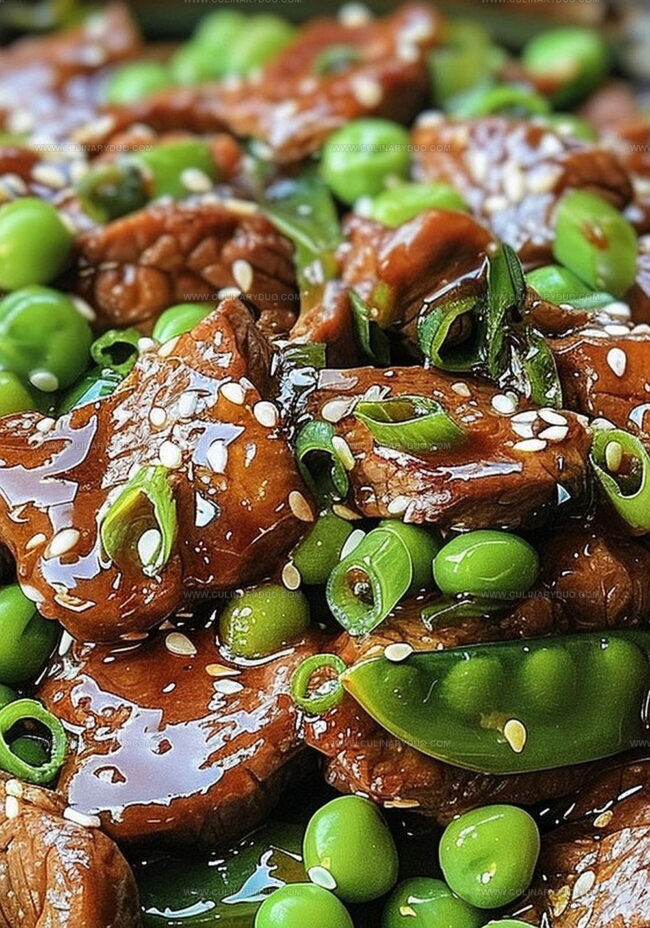
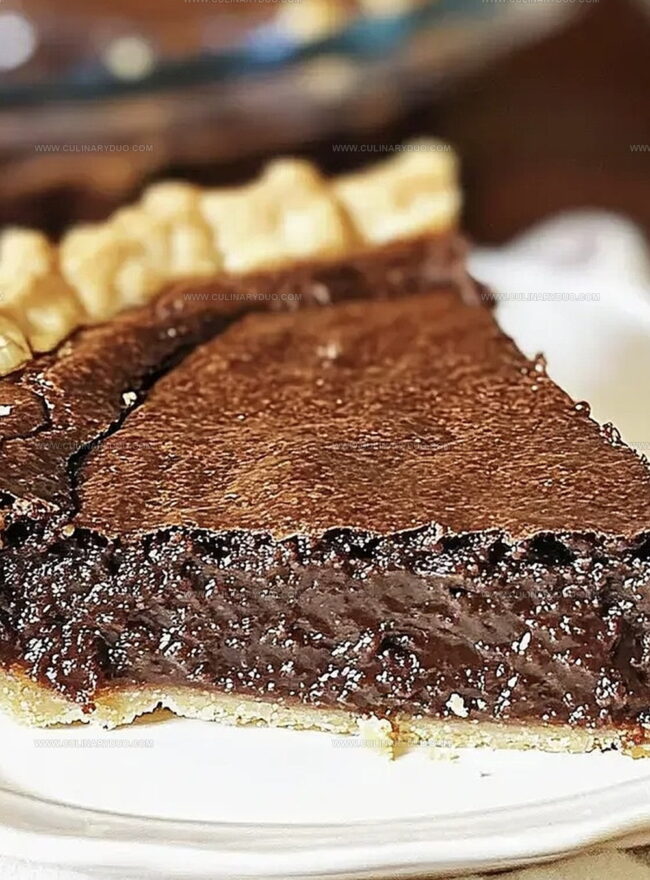
Natalie Brooks
Co-Founder & Content Strategist
Expertise
Education
eCornell
Natalie brings the vibrant, plant-powered side to Culinary Duo. After earning her Plant-Based Nutrition Certificate from eCornell, she combined her love for fresh ingredients with a passion for storytelling, aiming to make healthy cooking simple and satisfying.
Her kitchen motto: good food doesn’t need a fancy label, it just needs fresh ideas and a little creativity. Outside of writing and recipe testing, Natalie’s happiest in her garden, exploring farmers’ markets, or mixing global flavors into new kitchen experiments.